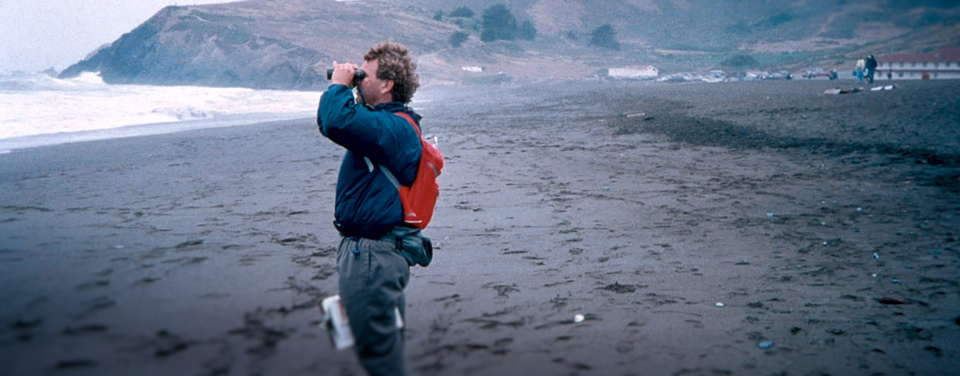'Beach Watch' Celebrates 20th Anniversary
More than 300 people have donated 1.3 million hours to NOAA volunteer program

Citizen Scientists
Beach Watch is an award-winning program with an 85 percent retention rate. The program is an example of how "citizen scientists" can play a dynamic role in protecting our oceans and coasts.
NOS's flagship formal volunteer program, called Beach Watch, just celebrated its 20th anniversary at central California's Gulf of the Farallones National Marine Sanctuary (NMS). The sanctuary protects 1,282 square miles of coastal and offshore Pacific waters, providing critical breeding and pupping habitat for northern elephant seals, harbor seals, Steller sea lions, California sea lions, and northern fur seals. Its bountiful waters also support the largest seabird rookery in the contiguous United States.
In monthly surveys, volunteers count and record the number of both live and dead birds and marine mammals that they observe along the beach; record human activities such as the number of visitors, dog walkers, swimmers, and surfers; note the presence of any oil, tar balls, marine debris, algae, or invertebrates such as jellyfish; and take photos to illustrate shoreline conditions.
"This information has proved invaluable in managing the sanctuary," says Sanctuary Research Coordinator Jan Roletto, who first conceived of the Beach Watch program in response to the threat of oil spills in the sanctuary. "Documenting dead animals establishes baseline mortality rates and trends, which can be compared during a human-induced disturbance like an oil spill or hazmat event. Similarly, live bird and mammal counts provide seasonal and spatial trends for coastal wildlife and known locations of threatened and endangered species to direct resource protection efforts."
Roletto also notes that Beach Watch data on visitor activities offers insight into people's effects on wildlife. A large number of people in an area may, for example, reduce the shorebird population. Beach Watch surveys have also alerted sanctuary managers and other authorities to hazmat events and even mortality incidents, which are the simultaneous deaths of large numbers of seabirds or marine mammals.
Get Social
More Information
Did you know?
Beach Watch volunteers document conditions along 150 miles of beaches in the sanctuary, including such famous San Francisco Bay Area shores as Pt. Reyes National Seashore, Ocean Beach, and the San Mateo County coast. Since the program began in 1993, volunteers have donated an equivalent cash value of $4.1 million in in-kind services to the government.
